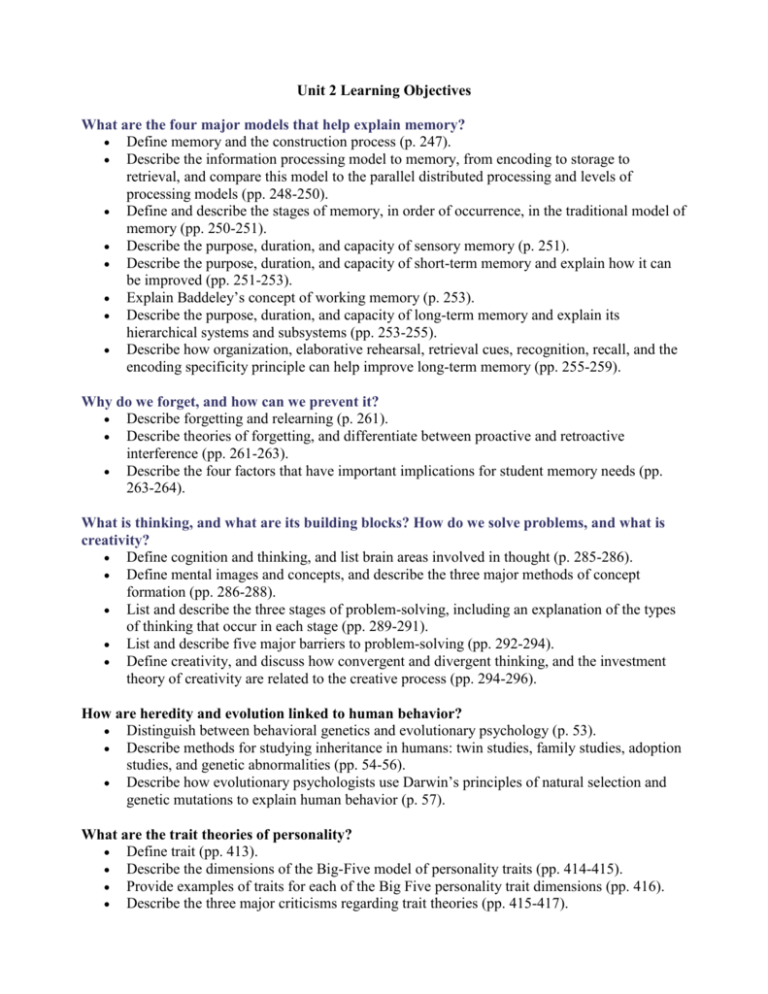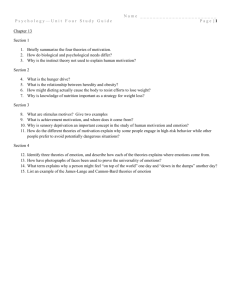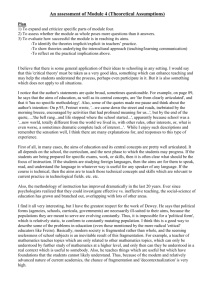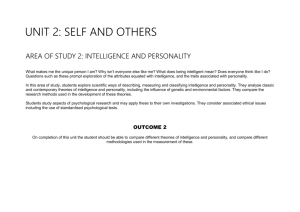Unit 2 Learning Objectives
advertisement

Unit 2 Learning Objectives What are the four major models that help explain memory? Define memory and the construction process (p. 247). Describe the information processing model to memory, from encoding to storage to retrieval, and compare this model to the parallel distributed processing and levels of processing models (pp. 248-250). Define and describe the stages of memory, in order of occurrence, in the traditional model of memory (pp. 250-251). Describe the purpose, duration, and capacity of sensory memory (p. 251). Describe the purpose, duration, and capacity of short-term memory and explain how it can be improved (pp. 251-253). Explain Baddeley’s concept of working memory (p. 253). Describe the purpose, duration, and capacity of long-term memory and explain its hierarchical systems and subsystems (pp. 253-255). Describe how organization, elaborative rehearsal, retrieval cues, recognition, recall, and the encoding specificity principle can help improve long-term memory (pp. 255-259). Why do we forget, and how can we prevent it? Describe forgetting and relearning (p. 261). Describe theories of forgetting, and differentiate between proactive and retroactive interference (pp. 261-263). Describe the four factors that have important implications for student memory needs (pp. 263-264). What is thinking, and what are its building blocks? How do we solve problems, and what is creativity? Define cognition and thinking, and list brain areas involved in thought (p. 285-286). Define mental images and concepts, and describe the three major methods of concept formation (pp. 286-288). List and describe the three stages of problem-solving, including an explanation of the types of thinking that occur in each stage (pp. 289-291). List and describe five major barriers to problem-solving (pp. 292-294). Define creativity, and discuss how convergent and divergent thinking, and the investment theory of creativity are related to the creative process (pp. 294-296). How are heredity and evolution linked to human behavior? Distinguish between behavioral genetics and evolutionary psychology (p. 53). Describe methods for studying inheritance in humans: twin studies, family studies, adoption studies, and genetic abnormalities (pp. 54-56). Describe how evolutionary psychologists use Darwin’s principles of natural selection and genetic mutations to explain human behavior (p. 57). What are the trait theories of personality? Define trait (pp. 413). Describe the dimensions of the Big-Five model of personality traits (pp. 414-415). Provide examples of traits for each of the Big Five personality trait dimensions (pp. 416). Describe the three major criticisms regarding trait theories (pp. 415-417). What is intelligence and how is it measured? Explain why intelligence is difficult to define, and differentiate between Cattell’s fluid and crystallized types of intelligence (pp. 304-305). Describe Gardner’s theory of multiple intelligences and provide examples that relate to each type of intelligence (pp. 305-306) Describe Sternberg’s triarchic theory of successful intelligence (pp. 306-307). Explain how an intelligence quotient (IQ) is determined (p. 308). Differentiate between the Stanford-Binet and the Wechsler intelligent tests (pp. 308-310). Define standardization, reliability, and validity, and explain why each is important for intelligence testing (p. 310). How do we measure extremes in intelligence? What roles do biology, genetics, the environment and ethnicity play in intelligence? Describe the extremes of mental retardation and mental giftedness (pp. 312-313). Define savant syndrome (p. 313). Explain how biology, genetics, and the environment impact intelligence (pp. 314-316). Discuss the influence of ethnicity and culture on intelligence (pp. 316-319). Discuss the effects of stereotype threat on individual’s performance on IQ tests (p. 318). How does cognition, or the way we think about the world, change during our life cycle? Discuss Piaget’s process of cognitive development: schema, assimilation, accommodation (pp. 339-340) Describe the characteristics of his four stages of cognitive development (pp. 340-345) State the two major criticisms of Piaget’s theory (pp. 345-346). What are some of the key themes and theories in social, moral, and personality adjustment? Describe the positions and theories of Harlow and Ainsworth regarding infant attachment, and relate this to research on romantic love (pp. 347-352). List and describe Kohlberg’s three levels of moral development, and provide an example of typical reasoning at each stage (pp. 352-354). Describe Erikson’s eight stages of psychosocial development, and discuss both the criticisms and contributions of his theory (pp. 355-358). Discuss the three myths of development: adolescent storm and stress, mid-life crisis, and empty nest syndrome (pp. 358-359). What is Maslow’s theory of motivation? What causes us to achieve? Explain Maslow’s hierarchy of needs and provide examples when these needs are not met in the order as he proposes (pp. 379-380). Describe the causes and traits associated with the achievement motive (pp. 386-387). What major theories and concepts do I need to know to understand emotion? How can I apply critical thinking to motivation and emotion? Describe the cognitive, physiological, and behavioral components of emotion (pp. 391-393). Compare and contrast the James-Lange, Cannon-Bard, facial-feedback, and two-factor theories of emotion, and the research regarding each of these theories (pp. 393-397). Define, compare and contrast intrinsic and extrinsic motivation, explain possible problems of using extrinsic rewards, and discuss three ways to increase motivation (pp. 398-401).








